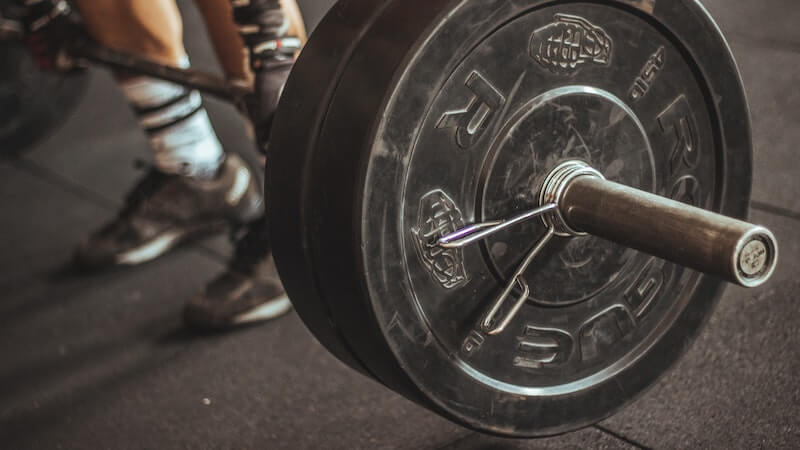Strength 101
Episode #4 of the course Hack your workout: A self-paced system for core muscle and posture strength by John Robin
Welcome to Day 4 of our course!
Now that you have your shopping list from yesterday’s lesson, we can talk about how to do each of the exercises on the microcycle sheet.
We’ll devote the next three lessons to just that, starting with the first eight rows today.
Welcome to Strength 101!
The Eight Strength Exercises
The strength exercises are all selected to target and reinforce core muscle groups. Core muscles are the muscles that help you maintain and improve your posture.
Proper form and specific pointers for each strength exercise are critical for doing this workout safely and effectively. In today’s lesson, I’m going to cover the bare basics. In Lessons 7 and 8, we’ll come back to them to cover more of the details that will help you improve and avoid injury.
The squat. A squat involves dropping your hips into a sitting position.
You stop when your legs are parallel with the ground. Your butt should be about the same level as your knees. The muscle work begins when, from this position, you flex your legs and butt muscles to drive your hips back up to a standing position.
Start with bodyweight. When you can do this, place the barbell on your back. To further increase strength, add plates to each side.
Overhead press. An overhead press involves raising the barbell from in front of your chest vertically upward until both arms are straight above your head. Finish by lowering the bar back to your chest.
Start with just the barbell. Increase strength by adding plates to each side of the barbell.
Deadlifts. A deadlift involves picking up the barbell from the ground.
To start, bend your knees, similar to a half-squat. Grip the bar. When you lift it, use your legs and keep your back straight. All the muscle action should be in your thighs and hips.
Stop when you’re holding the bar at hip level and your legs are straight.
Lower the bar by bending your hips back until the bar is below your knees, then bend your knees more fully to get back in half-squat, letting the bar hit the ground.
It’s the same action as picking up a box safely, then putting it back down in reverse motion.
Start with 10-lb. plates on each side. Increase the weight gradually to improve strength.
Chin-up. A chip-up involves hanging from the overhead bar on your power rack, hands gripped with palms facing you, then flexing at the elbow to lift your body up until your chin comes above the bar. You’ll feel the muscle work in your biceps, on the front of your arms.
Unflex to drop back to hanging position.
Start with your body weight. To increase strength, you hang plates from your hips, using a chain. I’ve included a link as a reference at the end of the lesson.
Bench press. A bench press involves lying on the bench, inside the power rack, with arms extended straight and the barbell above your collarbone. You lower the barbell diagonally until it’s at the bottom of your ribcage, then press upward diagonally until it’s back above your collarbone. You will feel the muscle action in your chest and upper arms.
Start with the empty barbell. Increase your strength by adding plates to each side.
Row. A row involves lifting the bar from the floor to your ribcage.
Like with the deadlift, you start in a half-squat and pick the bar up from the ground. Unlike the squat, you keep your knees and hips bent in half-squat the whole time. You should feel the muscle action in your back, between your shoulder blades. As you raise the bar, squeeze your shoulder blades together.
Start with 5 lb. on each side. Increase your strength by adding plates.
Dips. A dip involves first raising yourself up on straight arms between a pair of dip bars, then lowering your body (“dipping”) until your upper arms are parallel to the floor.
Flex at the shoulders to pull your body back up until your arms are straight. You should feel most of the muscle action around the sides of your ribcage and inner arms.
Start dips with bodyweight, then increase strength by attaching plates to your hips with a chain.
Side leg raise. A side leg raise involves lying on your side with your legs together, then raising your upper leg until it’s at a 45° angle with the floor.
Drop the leg to meet the lower one to complete a rep. You should feel the muscle action at the side of your hip, a muscle called the gluteus medius.
Start with no weight, but to increase strength, wear the attachable ankle weights, adding 1 lb. at a time.
Next up
I’ve included two demonstration videos at the end of the lesson, but as promised, we will come back to these to cover further safety and technique pointers in Lessons 7 and 8.
Tomorrow, we’ll move to the next section of the microcycle: stretching.
Example of equipment
Chain for adding weights to chin-ups and dips
Recommended videos
I have included a few form videos. I recommend you search “how to ____ properly” on YouTube, where “___” is the type of exercise. Watch many different videos to keep learning more about proper form and how to avoid developing bad habits.
How to do deadlifts with proper form video
How to do overhead presses with proper form video
Share with friends

